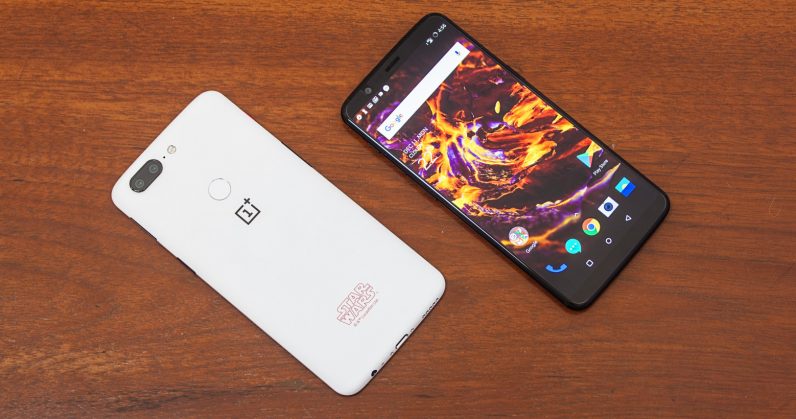In this post, we’ll take a look at every T version in comparison with its non-T counterpart launched earlier that year. Please note I’ve not counted for software updates as OnePlus has a record of making almost all software features available to the previous version.
The OnePlus 3 v the OnePlus 3T
In November 2016, OnePlus released a phone under the T series for the first time. The idea was to release two products per year, so the company can catch up with its rivals in the second half of the year. The 3T, released five months after the release of the OnePlus 3 brought some significant upgrades with it:
Snapdragon 821 (from an 820) 16MP front-facing camera (from 8MP) 3,400 mAh battery (from 3,000 mAh) 128 GB storage option (instead of ‘just’ 64 GB) Sapphire lens rear camera cover
The 3T was priced at $439 as compared to the $399 starting price of the OnePlus 3.
The OnePlus 5 v the OnePlus 5T
For this iteration, OnePlus shifted its signature front-facing fingerprint sensor to the rear, increasing the screen size effectively. Here are all changes:
A 6.01-inch full HD+ screen ( from 5.5-inch full HD screen) 18:9 aspect ration (compared to 16:9) The fingerprint sensor on the rear instead of the front 20-megapixel low-light secondary sensor in place of the 20-megapixel telephoto sensor.
The Oneplus 5T started at $499, $20 from the OnePlus 5’s starting price of $479.
The OnePlus 6 v the OnePlus 6T
With the OnePlus 6T, the most notable change was ditching the rear-mounted fingerprint sensor and opting for an in-screen fingerprint sensor for the first time:
In-screen fingerprint sensor (instead of a rear one) Waterdrop notch (reduced size instead of a wider notch) 6.41-inch display (compared to 6.28-inch) 3,700 mAh battery (from 3,300 mAh) Removal of the headphone jack. RIP.
The OnePlus 6 started from $529 while the 6T was priced at $549.
The OnePlus 7 v the OnePlus 7T
With a 90Hz screen and an additional camera on the rear, I felt this was one of the most significant updates of the ‘T’ series (not the YouTube channel):
6.55-inch fullHD+ screen with 90Hz refresh rate (compared to the 6.41-inch screen with 60Hz refresh rate) Improved 48-megapixel primary sensor with f/1.6 aperture (instead of f/1.7) 12-megapixel telephoto sensor (compared to the 5-megapixel telephoto sensor) New 16-megapixel ultrawide sensor 3,800 mAh battery with 30W warp charging (instead of 3,700 mAh battery with 20W warp charging)
The OnePlus 7 – not available in the US – was priced at Rs. 32,999 ($463), and the OnePlus 7T is priced at Rs. 37,999 ($535).
The OnePlus 7 Pro v the OnePlus 7T Pro
Hahahaha! This one’s too easy. After a super hit upgrade with the OnePlus 7T, the company produced a dud with this one. The OnePlus 7T pro got a minor processor bump with Qualcomm Snapdragon 855+ instead of Snapdragon 855. Plus, it had a tiny battery increase of just 85mAh. How generous!
OnePlus engineers made some cosmetic changes to the newer model, and then called it a day.
The special editions
The Chinese phone maker started releasing special ‘T’ editions since 2017. That year, it released the gorgeous OnePlus 5T Star Wars: The Last Jedi edition in white color. It has a Kylo-ren inspired case, special wallpapers, and icons. Credit: Abhimanyu Ghoshal Last year, the company partnered with prestigious car company McLaren for a special edition phone. The company themed the OnePlus 6T around signature black and papaya McLaren colors. The $699 device had 10GB of RAM, and 30W fast charging.
This year, for the OnePlus 7T pro’s special edition, the phone maker formed a partnership with McLaren again. However, apart from the holographic design, the phone doesn’t offer any extra goodies.
A hit or miss series
OnePlus’ T series of updates have been hit or miss. Phones like the OnePlus 5T and the OnePlus 7T have offered genuine spec bumps with upgrades in screen and camera. However, the phone likes the OnePlus 6T and the OnePlus 7T pro has been rather disappointing. They felt like the company has pushed engineers to get a product out, because they have to release it rather than providing a visible upgrade. After the T release, the company usually phases out sales of the phone released earlier in the year instead of lowering its price and giving consumers another option. For instance, it could’ve discounted the OnePlus 7 this year and gain customers looking for a phone around $400 mark.








